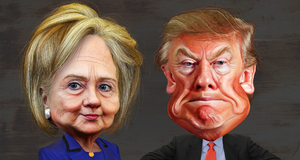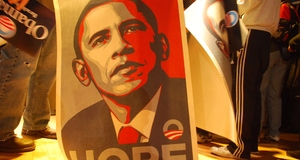The Obama PresidencyE-Electioneering: The Political and Cultural Influence of Social Media in the 2008 and 2012 Presidential ElectionsCandidate SitesAside from their social networking presence, the use of each candidate’s personal website and social media was also an important factor in each campaign’s digital presence28. While both candidates seemed to be fairly equal in terms of the aesthetics and user-friendliness of their personal websites, Obama was once again the victor, excelling through his campaign’s modern twists in changing his site. Chris Hughes re-engineered Obama’s website to function not only as a successful transmitter of the candidate’s political stances, but also as a spatially-transcending Facebook-like arena that allowed users to access social media29. Since 2008, the roles of the candidate websites have expanded to include four other elements: ‘On the Issues’ pages which tell us a candidate’s stance on an issue, links to recent media reports, press releases or personal messages from the campaign, and videos either from the candidate or from campaign events30.Both candidates tackled their ‘On the Issues’ pages by addressing a wide variety of problems concerning American life, ranging from the economy to Second Amendment rights, and from judicial philosophy to climate change. When incorporating a newsroom element to their sites, the candidates took opposite approaches: Barack Obama posted both mainstream news pieces and press releases, whereas John McCain only posted campaign-written material. In terms of adding a video element to their campaign sites, Barack Obama was the front runner again. His campaign team created BarackTV, which was a video screen on the right side of this campaign page that ran videos from his rallies, campaign advertisements and direct addresses from the candidate and his supporters. There were also options to live stream rallies, speeches and debates through BarackTV. On McCain’s page there was a video element; however, it was less sophisticated than Obama’s31. An interesting study by Pew Research Group analyzed the language used in candidates’ campaign websites and found that their most-used words may have influenced voters’ perceptions of them. For example, Barack Obama used the words ‘rural,’ ‘families,’ ‘urban,’ ‘help,’ and ‘children’ most often, whereas John McCain used the words ‘government,’ ‘Iraq,’ ‘country,’ ‘service,’ and ‘believe’ most often32. When looking back on the difficult socio-political climate during the 2008 campaign, it is evident that John McCain’s language may have hurt him, considering how most Americans felt about the current state of government and the war in Iraq at the time. His use of the word ‘government’ and ‘country’ mostly referred to his belief that there was irresponsible government spending in Washington33. Barack Obama’s language seems to be centered and tailored to the middle and lower classes, who had been most hurt and affected by the economic downturn and who were most concerned about social problems plaguing the country. Obama’s website made a concerted effort to reinforce his commitment to economic security and improved education for rural and urban areas, dedicating specific pages in his website to both groups34. In terms of voter engagement, both sites allowed for individual user-based content to be created. On BarackObama.com, supporters could create personalized profiles on his customization page, MyBO. Here, users could set up a dashboard page which resembled a social network’s homepage. Visitors to the site could access content specific to their personal interests. MyBO users could also communicate with their neighborhood campaign offices and arrange to volunteer with the campaign or learn about upcoming events in their area. They could also donate to the campaign online in a few easy steps35. Its Republican counterpart, McCainSpace, had a clumsy rollout, but was eventually a suitable competitor. Although announced and advertised early in the campaign, McCain’s voter engagement feature did not become public until August 2008, months after Obama’s version. Even then, the website was plagued by ‘under construction’ messages until later that month36. When finally fully functioning, the page resembled the Obama version and had similar features, although McCain’s was not as sophisticated or as aesthetically pleasing as his opponent’s. The most notable feature about Barack Obama’s user-generated site was its potential as a crucial tool for grassroots campaigning. It allowed supporters to take the reigns in areas where the campaign didn’t have established offices and permit individuals to organize events, canvass their neighborhoods and host phone banks from home. This neighborhood team model was unusual but crucial to building support on a grassroots level in what is considered to be the most common form of political socialization37. Later, if a formal campaign office were set up in that area, field staff would have access to an existing network of active supporters who could take part in more formalized grassroots campaigning38. Why Did it Work?The situational theory of publics best explains how and why Obama’s approach to a more socially involved campaign was more effective than McCain’s. Professor James Gruber published his theory in 1984, which proposed that positive public relations are based on an organization’s ability to segment a population depending on the type of public which a group sought to reach. In essence, the public could be categorized based on how cognisant they are about a problem or event and be communicated within a tailored and effective manner which is best suited to the extent that they care about the problem or event39. The situational theory of public subdivides the population into four categories: the non-aware public, the latent public, the aware public and the active public, all of which have different levels of cognisance about a “problem,” which in this case will be defined as the 2008 presidential election. Within the lens of this theory of public relations, the two most important groups to focus on are the latent and aware publics40. The non-aware public is apathetic and does not care for the election. In politics, the active public is aware of the election and seeks to become involved, and is the most devoted and mobile group that will likely determine which candidate to support based on their own preferences and research. The latent and aware publics are key. The latent publics are aware of the election, but will choose not to participate, perhaps because of the same apathy shared by the non-aware public. The aware public knows the election is happening and recognizes that they should participate, but may be undecided between candidates. The Obama campaign may have unknowingly tapped into Gruber’s situational theory of publics, which has since evolved to explain why people join activists groups and develop an interest in social affairs41. As mentioned earlier, Senator Barack Obama realized the need to mobilize people who were either going to be voting for the first time in 2008 or who had voted before and perhaps grown bored with politics and needed a jolt to become re-energized: the latent and aware publics. Barack Obama and his campaign team used the technology which pre-existed the election in a way that would motivate voters to participate when they ordinarily would not; this earned the digital community’s votes in 2008 and encouraged them to vote in future elections, empowering them to become a part of the active public and contribute to all levels of government. OutcomesVoter turnout was at its highest since 1968;on November 4, 2008, 57% of the voting population participated in the presidential election, according to the United States Census Bureau42, although the national vote tally reports turnout at just below 59% 43 and the Bipartisan Policy Center calculates 2008 turnout at 62%44. Either way, one can argue that the inflated voter turnout rates could be due in part to the increased usage of social networks and social media that reached a latent voter base and younger, first time voters. Compared with the previous non-incumbent presidential election in 2000, voter turnout in 2008 increased by a margin of 7%. Compared with the last presidential election in 2004, voter turnout in 2008 increased by 3%. As we move towards analysis of the 2012 presidential contest, it is important to notice an actual decrease in voter turnout between 2008 and 2012, which may be due in part to the fact that the technology was revolutionary, innovative, and more motivating in 200845. The election resulted in 53% of the electorate voting for Barack Obama and 46% voting for John McCain according to CNN46. The fact that Barack Obama was seemingly less established than his opponent, yet won with such a relatively large margin during a high turnout year, points to the fact that his innovations and advantages over the McCain campaign won him the vote. President Obama was able to reach corners of the electorate that sought stimulation from government, and finally tapped into that market by digitizing electoral politics, a trend which has since lasted and grown into a fundamental component of any campaign.Continued on Next Page » Suggested Reading from Inquiries Journal
Inquiries Journal provides undergraduate and graduate students around the world a platform for the wide dissemination of academic work over a range of core disciplines. Representing the work of students from hundreds of institutions around the globe, Inquiries Journal's large database of academic articles is completely free. Learn more | Blog | Submit Latest in Political Science |


















